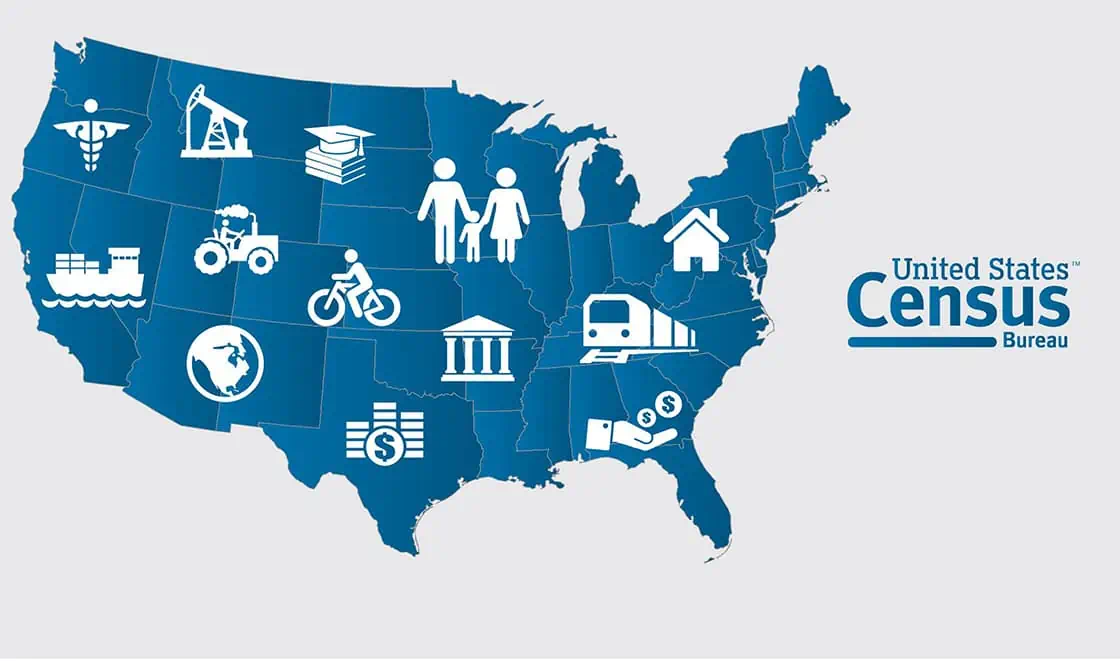Key Findings
- Harvard University ranks #1 in our ranking as the school with the strongest “pull” in the country
- 40% of Americans who began college in 2021 moved away from home
- 20% of those who moved for college left their home state, down from 31% in 2020
- In 47 out of 50 states, the majority of new college students enrolled in a college inside their home state
- Ohio attracted almost 12% of all out-of-state college moves in 2021, more than any other state
- White students (30%) were twice as likely as Hispanic students (14%) to move to college in another state
Introducing HireAHelper College Move Index: The Most Moved-To Colleges in the United States
As college enrollment declines and an increasing number of students are choosing to go to college in their home state, which U.S. colleges and universities continue to see a steady stream of American students from all around the country?
To work this out, we took 200 highest-rated U.S. colleges and collated data on:
- Average miles traveled by newly admitted students from the U.S.
- Percentage of newly admitted students coming from a different state
- Number of U.S. states represented among new students, and
- U.S. News college ranking in 2023
Based on a combination of these factors, we created a “College Move Index”. This is a ranking that compares top U.S. colleges on how much “pull” they have in terms of attracting new students from across the country.
“Of all the U.S. states, only the District of Columbia (85%) New Hampshire (53%), and Minnesota (51%) had more than 50% of their students go elsewhere to begin college.”
The colleges and universities…
- With the most out-of-state students
- Where a new student had to travel the longest distance to attend
- Whose student body represented as many U.S. states as possible
…ranked highest on our model. Conversely, those where newly admitted students were mostly local were ranked lower.
Browse the graphic to discover the top 50 schools in the United States with the strongest “pull” for other U.S. students. You can also see how colleges compare on individual factors.
To see how the rest of the colleges we studied fared, check out the interactive table at the end of this article.
Despite Declining Enrollment, Moving to College Remains Popular
In 2022, just over 2 million Americans enrolled in college, which is 1.5% fewer than did so in 2021, according to the fall enrollment estimates produced by the National Student Clearinghouse Research Center.
This adds to the long-term trend of declining college enrollment, which stretches to 2009 — the last time the number of Americans enrolling in college or university increased year-to-year.
Still based on the Annual Social and Economic Supplement data from the Current Population Survey, as many as 827,000 Americans moved to go to college last year. That makes for a somewhat marginal increase of 0.2% compared to 2021.
College admissions have been declining for over a decade, but the number of people moving for college had a different trajectory. In 2020, for example, as many as 43% of newly enrolled students moved to attend college. In 2022, this figure is still at nearly 40%.
“The state where students were most likely to go to college locally was Utah, with 92% of new students choosing to study in their home state.”
This may be an indication that fewer people enroll in colleges close to where they live; think local community colleges or trade schools.
Meanwhile, better-known schools continue to enroll at the same pace, increasing the share of new students who relocate to attend college.
In our previous study, the average distance a new student had to move to study in one of the top 200 colleges and universities was 293 miles. That number has grown 33% higher, with an average of 390 miles.
Migration of the Minds: States that Students are Most and Least Likely to Leave
One in five (20%) students who enrolled in college in 2021 (the latest data available) left their home state, which is markedly lower than 31% who did so the year prior.
Of all the U.S. states, only the District of Columbia (85%) New Hampshire (53%), and Minnesota (51%) had more than 50% of their students go elsewhere to begin college.
In line with the findings of our previous study, the states that saw most of their students leave to go to college in another state are generally smaller, less populated states with fewer colleges and universities for local students to enroll in.
Also notable: Alaska (48%), Vermont (46%), Delaware (45%), and Rhode Island (43%) were also among the states with the highest share of students leaving to pursue a college degree in another state.
| State | % of students leaving state | State | % of students leaving state | |
| District of Columbia | 85.4% | Utah | 8.4% | |
| New Hampshire | 52.9% | Arizona | 11.9% | |
| Minnesota | 51.3% | California | 11.9% | |
| Alaska | 48.5% | Alabama | 12.9% | |
| Vermont | 46.3% | Indiana | 13.0% | |
| Delaware | 45.4% | Mississippi | 13.1% | |
| Rhode Island | 43.0% | Florida | 13.1% | |
| Hawaii | 38.4% | Louisiana | 13.1% | |
| Maryland | 37.0% | Kentucky | 13.5% | |
| Connecticut | 36.1% | Oklahoma | 13.8% |
The state where students were most likely to go to college locally was Utah, with 92% of new students choosing to study in their home state. In Arizona and California, that share was at a similarly high 88%.
In many southern states like Alabama, Mississippi, Florida, Louisiana and Kentucky, the share of students staying inside their home state for college was 87%.
“Around 30% of white students left their home state to pursue higher education, as did 28% of Asian and Pacific Islander students … [while] just 14% of Hispanic and 18% of Black college enrollees ended up moving to a different state.”
To put all these findings into greater context, it’s worth remembering that moving in 2021 was still very much affected by the pandemic, back when many people reported moving in search of safety or to better take care of their family members.
2021 was also the year when, for similar reasons, colleges were flip-flopping between remote study and in-person instruction.
Together, these two factors may have contributed to the fact that for many new students, moving to study out-of-state in 2021 simply wasn’t an option they were willing to pursue.
Oh Wow, Ohio: Buckeye State Top Destination for Out-of-State College Moves
In a year that wasn’t a big one for out-of-state moves to pursue a college degree, where did those Americans that did move go to study? The answer may surprise you.
In 2021, the state that was the top destination for those moving to college was Ohio, which attracted 11.6% of all interstate moves bound for colleges or universities.
Remarkably, Ohio overtook the states that usually dominate these rankings: Illinois (7.8%), Texas (7.6%) and even Massachusetts (7.1%), all known for their high-profile universities.
Demographic Distance: Certain Students Are Most Likely To Move to College Out-of-State
Despite a relatively high percentage of newly admitted students who moved to go to college, how far they moved varied significantly by their demographic.
Around 30% of white students left their home state to pursue higher education, as did 28% of Asian and Pacific Islander students.
These figures are roughly twice as high as the corresponding percentages for Hispanic and Black students. Just 14% of Hispanic and 18% of Black college enrollees ended up moving to a different state.
To see how schools in the top 200 of U.S. News ranking compare on how far students are prepared to travel there, see the interactive table below.
Sources and Methodology
Figures on the number and percentage of people moving to college within or outside their home state come from the Current Population Survey (CPS).
Data on college admissions, including the origin states of newly admitted students, are taken from the National Center for Education Statistics (NCES).
The U.S. News 2022-23 Best National University Rankings are used as the basis for selecting the top 200 colleges in the United States.
To estimate the average distance traveled by a newly admitted student, we took the school’s location and calculated the distance between its campus and the statistical population centers of each state (as defined by the U.S. Census Bureau).
All calculations are weighted, which is to say, the more students a college admitted from farther away, the greater the average distance traveled was.
Only moves within the United States are considered.
The HireAHelper College Move Index score has a maximum of 100 points and is based on a selection of 4 factors, which were weighted as follows:
-
Distance Travelled Score (40 points) = Estimated average miles travelled by newly admitted students
-
Out of State Score (25 points) = Percentage of newly admitted students coming from a different state
-
State Representation Score (30 points) = Number of U.S. states represented among new students
-
Ranking Score (5 points) = U.S. News ranking in 2023














